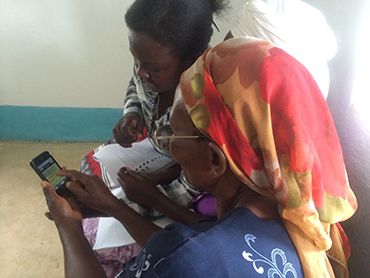Using mobile learning technology to improve access to healthcare in East Africa
The University of Oxford has led a project developing mobile applications designed to advance the training and supervision of community health workers in Kenya
 Sharing with new health workers how to use one of the apps (the REFER app) that we've developed in our project.
Sharing with new health workers how to use one of the apps (the REFER app) that we've developed in our project.Following six months of needs assessment in the two marginalised communities of Kibera – Nairobi’s largest informal settlement – and Makueni County, the mCHW project focused on improving the supervision of CHWs and providing them with the tools to assess the healthcare needs of children under five.
Using a participatory approach, Principle Investigator Dr Niall Winters, Associate Professor of Learning and New Technologies at Oxford’s Department of Education, and his team (see mHealthpartners.org) developed a suite of work-based training applications giving CHWs a mobile portfolio of their practice, easily accessible reference material, and the means to record data collected in the community before it is automatically sent to their supervisors. The technology helps CHWs make informed decisions about which children to refer to the primary healthcare system – ensuring those who really need care get it, while building capacity.
Following on from this success, the project sought to help NGOs operating in the health sector design and develop their own mobile training apps. The mCHW WhatsApp group, meanwhile, capitalises on the popularity in Kenya of the instant messaging platform to further assist CHWs. Today, CHWs and their supervisors are using the technology to enact virtual one-to-one, group, and peer-to-peer forms of supervision and support.
"The project showed how training and on-going supervision of CHWs can be improved though innovative mobile technologies,” says Dr Winters. Moreover, in increasing access to healthcare in sustainable way, these three learning interventions have the potential to reduce poverty.
But the impact of mCHW reaches beyond the development of appropriate technology. Through its fieldwork, the project identified a large number of children with disabilities ‘hidden’ within the community, whose mothers were afraid to ask for help due to widespread stigma. The outcome is Hidden Children, a new project aiming to support the mothers of children with disabilities and to raise awareness among CHWs of disability and its associated issues in Kenya.
Funded by ESRC-DFID (Grant Ref: ES/J018619/2) and John Fell Fund